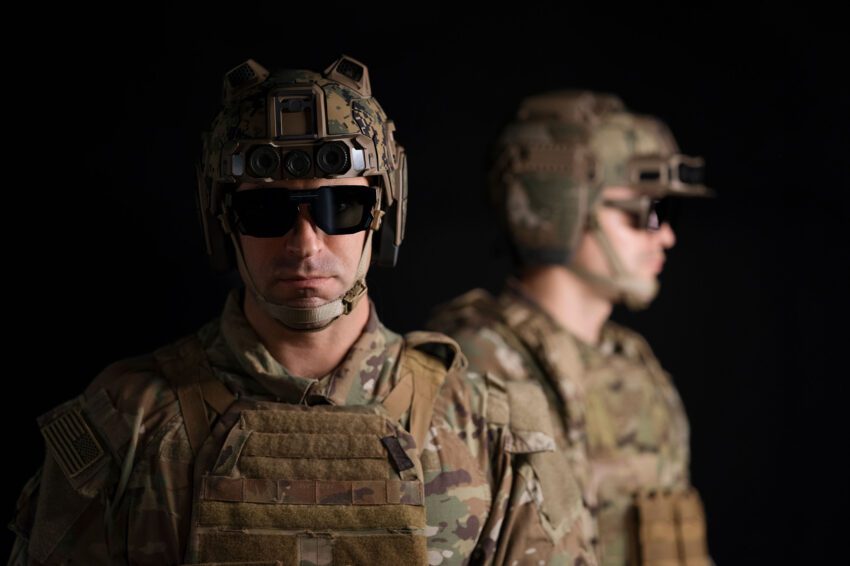
palmer luckey s anduril launches eagleeye military Anduril, the military tech company founded by Oculus creator Palmer Luckey, has unveiled EagleEye, an AI-powered mixed-reality (MR) system designed to enhance soldiers’ capabilities on the battlefield.
palmer luckey s anduril launches eagleeye military
Overview of EagleEye
EagleEye represents a significant advancement in military technology, integrating “helmet-native hardware” specifically designed for combat scenarios. This innovative system is part of a broader trend towards the incorporation of artificial intelligence and mixed-reality technologies in military operations. The modular hardware is described by Anduril as a “family of systems,” which includes a heads-up display, spatial audio, and radio frequency detection capabilities.
Key Features
The EagleEye system is engineered to provide soldiers with critical information in real-time. Key features include:
- Heads-Up Display: This feature allows soldiers to receive mission briefings and orders without taking their eyes off the battlefield. The display can overlay essential maps and other situational information, enhancing situational awareness.
- Spatial Audio: This technology provides directional sound cues, allowing soldiers to better understand their environment and react accordingly. It can help in identifying the location of threats or allies based on audio signals.
- Radio Frequency Detection: This capability enables the system to detect and analyze radio frequencies, which can be crucial for identifying enemy communications and coordinating responses.
- Control of Drones and Robotics: EagleEye can interface with drones and military robotics, allowing soldiers to control these assets directly from their helmets. This integration can streamline operations and improve the effectiveness of military missions.
According to Luckey, “We don’t want to give service members a new tool—we’re giving them a new teammate.” This statement underscores the vision behind EagleEye, which aims to create an AI partner that can assist soldiers in the field. The concept of an AI partner embedded in a soldier’s display has been a topic of speculation for decades, but EagleEye marks a tangible realization of this idea.
Development and Background
Anduril has been at the forefront of military technology since its founding. The company is known for its development of various defense technologies, including border control systems, lethal drones, and military aircraft. The inception of EagleEye has been a long-term project for Anduril, with the company already providing software for the U.S. Army’s existing mixed-reality goggles, which are based on Microsoft’s HoloLens hardware.
The partnership with Meta, announced in May 2023, represents a significant collaboration in the tech industry. Meta, formerly known as Facebook, has been investing heavily in augmented and virtual reality technologies, and this partnership allows Anduril to leverage Meta’s expertise in mixed-reality systems. The collaboration aims to enhance the capabilities of EagleEye, making it a more effective tool for military personnel.
A Reunion of Innovators
The partnership between Luckey and Meta’s CEO Mark Zuckerberg is notable, as it marks a reunion after a somewhat tumultuous history. Meta acquired Luckey’s startup Oculus in 2014, but he was ousted from the company three years later. Despite this, Luckey expressed enthusiasm about working with Meta again, stating, “I am glad to be working with Meta once again. My mission has long been to turn warfighters into technomancers, and the products we are building with Meta do just that.”
This statement reflects Luckey’s ambition to transform the capabilities of soldiers through advanced technology. The term “technomancers” suggests a blending of technology and magic, implying that the integration of AI and mixed-reality systems can empower soldiers in unprecedented ways.
Implications for Military Operations
The introduction of EagleEye has several implications for military operations. First and foremost, it represents a shift towards more technologically integrated warfare. As military conflicts become increasingly complex, the need for real-time information and enhanced situational awareness becomes paramount. EagleEye aims to address these needs by providing soldiers with tools that can improve decision-making and operational efficiency.
Moreover, the use of AI in military applications raises ethical considerations. While the integration of AI can enhance capabilities, it also poses questions about the role of human judgment in combat situations. The reliance on AI systems for critical decisions may lead to concerns regarding accountability and the potential for unintended consequences. As military organizations adopt technologies like EagleEye, they will need to navigate these ethical dilemmas carefully.
Stakeholder Reactions
The announcement of EagleEye has elicited a range of reactions from various stakeholders, including military personnel, defense analysts, and technology experts. Many in the military community have expressed excitement about the potential of mixed-reality systems to enhance operational effectiveness. The ability to receive real-time information and control drones from a helmet-mounted display is seen as a game-changer for soldiers in the field.
Defense analysts have also noted the strategic advantages that EagleEye could provide. The integration of AI and mixed-reality technologies could give the U.S. military a competitive edge in future conflicts. However, some analysts have cautioned that the rapid pace of technological advancement in warfare could lead to an arms race, as adversaries seek to develop similar capabilities.
Technology experts have highlighted the innovative aspects of EagleEye, particularly its modular design and the potential for future upgrades. The system’s ability to evolve with advancements in technology could ensure that it remains relevant in an ever-changing battlefield landscape. However, there are concerns about the cybersecurity implications of such systems, as they could become targets for hacking or electronic warfare.
Future Developments
As Anduril continues to develop EagleEye, the company is likely to explore additional features and capabilities. The integration of machine learning algorithms could enhance the system’s ability to analyze data and provide actionable insights to soldiers. Furthermore, as the technology matures, there may be opportunities to expand its applications beyond military use, potentially benefiting first responders and other sectors.
Anduril’s commitment to innovation in military technology suggests that EagleEye is just the beginning. The company has a track record of pushing the boundaries of what is possible in defense technology, and the partnership with Meta could lead to further advancements in mixed-reality systems. As the landscape of warfare evolves, technologies like EagleEye will play a crucial role in shaping the future of military operations.
Conclusion
The launch of EagleEye marks a significant milestone in the intersection of technology and military operations. With its AI-powered mixed-reality capabilities, the system aims to enhance the effectiveness of soldiers on the battlefield. As Anduril continues to develop this innovative technology in collaboration with Meta, the implications for military strategy, ethics, and operational efficiency will be closely monitored by stakeholders across various sectors.
As the military embraces these advancements, the dialogue surrounding the ethical use of AI in warfare will become increasingly important. The future of military technology is poised for transformation, and EagleEye is at the forefront of this evolution.
Source: Original report
Was this helpful?
Last Modified: October 13, 2025 at 8:38 pm
0 views















